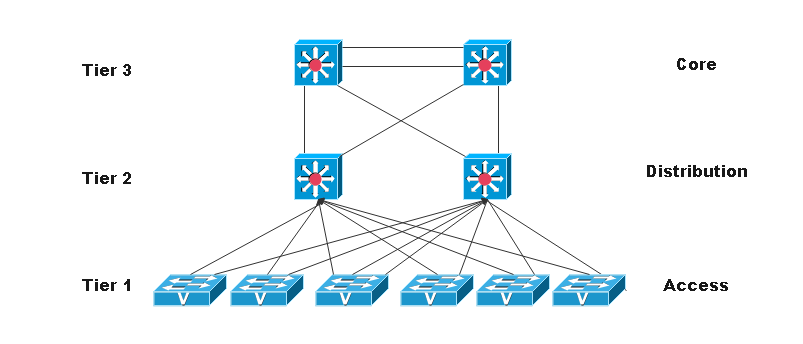Learning about slightly more advanced networking with linux
Paul Warren
Mastodon: @pwarren@mastodon.thewarrens.name
email: paul at thewarrens.name
© 2021 Paul Warren
CC BY-NC-SA
! WARNING !
I am not a network engineer, there are gaps in my knowledge
The words I use might not be the correct ones
Please don't blame me if your network stops networking
Maybe don't go and try building an ISP based off this talk :)
What even is a network
Ethernet?
Token Ring?
IPX?
AX.25?
What even is a network
ipv4?
ipv6?
tcp?
Allows connections between computers
Managed network?
Controls connections between computers
Scales connections between computers

Layers!
Like an onion!
That 7 layer thing from the OSI
Ethernet -> IP -> ICMP/TCP/UDP
Administrative overlays
VPNs and Tunnels
Layers!
This means the Physical layers do not have to match the Logical connections
Networks are also a bit fractal in nature
For the purposes of this talk, we can ignore a lot of complexity
An easy one!
VLANS
Ethernet layer
Designed to limit broadcast storms
Can also separate IP networks on the same Ethernet
Tagged and Untagged/Default
IEEE 802.1Q
VLANs in linux
Are pretty easy!
ip link add link enp0s2 name enp0s2.2501 vlan id 2501
ip -6 addr add 2001:db8:2501::10/64 dev enp0s2.2501
ip link set dev enp0s2.2501 up
VLANs in linux
Various different methods of making it go in different distributions
Debian: in /etc/network/interfaces
auto enp1s0.2502
iface enp1s0.2502 inet dhcp
iface enp1s0.2502 inet6 auto
OpenWRT has a nice GUI
What even is a router?
Two or more interfaces
Some logic to determine where a packet goes
Linux Routing
net.ipv4.ip_forward = 1
net.ipv6.conf.all.forwarding = 1
net.ipv6.conf.default.forwarding = 1
And we're done!
Yeah, not really :)
Static Routes!
Manually added, or scripted routes that don't change
ip route add 172.17.0.0/24 via 172.16.0.254 dev wg0
Static Routes!
Harking back to our vlan
ip -6 route add 2001:db8:2501::/64 via 2001:db8:2500::1 dev enp0s1
ip -6 route add 2001:db8:2502::/64 via 2001:db8:2500::1 dev enp0s1
ip -6 route add 2001:db8:2600::/64 via 2001:db8:2600:beef:face::1 dev enp0s1
Enter dynamic routes
As a Router:
Advertise your LANs
Discovering routes to other LANs
Optional: Do some logic
Add them to the routing table
Userspace daemons
talking to the kernel networking stack
Dynamic Routing
Open Shortest Path First (OSPF)
The algorithm is pretty interesting
RFC2328
RFC5340
For: Dynamic routes inside your networks
Dynamic Routing
Border Gateway Protocol (BGP)
RF4271
For: Dynamic routes outside your network (and inside sometimes)
The Userspace Daemons
BIRD: Berkeley Internet Routing Daemon
Quagga: Fork of Zebra
Significant overlap, but they are different
I've not used Quagga
intro to bird
Powerful
Complex to configure
Use version control
Intro to bird configuration
/etc/bird.conf
Each router needs a unique ID
Intro to bird configuration
KNorries diagram here
¿Por qué no los dos?
OpenWRT is a linux based distribution for real networking hardware
Bonus homework
Why did I use 2001::db8::/32?
Why did I use /64s?
I highly recommend going through KNorrie's network examples: https://github.com/knorrie/network-examples
OSPF Areas
Automatic transfers of internal aggregates to BGP (Something I've not investigated much)
Resources
These slides: https://gitea.pwarren.id.au/pwarren/SysAdmin2022
bird: https://bird.network.cz
Openwrt: https://openwrt.org/
The OpenWRT IRC channel, currently on the OFTC network
BenEater's "Why was facebook down for five hours"
Unused Bits
What I'm assuming we're familiar with
Diagram showing standard leaf node of a network with a bit cloud containg "The rest of the org"
What we're familiar with
Diagram showing added storage and server network
How things evolve
Uh Oh, we've got a new Datacentre
How things evolve
which has its own lot of storage and servers
How things evolve
And now people want to work in Tasmania!